Posted by Powee Celdran
“In front of the palace, the emperor ordered the criminal’s hands to be cut off and his eyes put out. I enquired why they did not put him to death, and they replied that the emperor could not order his soul to be destroyed.” -Pero Tafur, Travels Volume 17, 1437
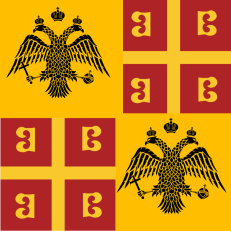
Welcome to another Byzantine article by The Byzantium Blogger! In this article, I will heavily cover some elements of Byzantine life, particularly crime and punishment and how it was dealt with by the law. Medicine too was another important aspect of Byzantine life and in the empire, there were many doctors with sophisticated medical techniques but also the law had made some punishments for medical crimes committed by doctors. If the Byzantines were sophisticated and highly educated medieval people, they were advanced in science, mathematics, and philosophy as I have mentioned in the previous article on Byzantine science and technology but aside from science, being sophisticated and very literate meant that the Byzantines must have also had a strong code of laws and advanced and systematic ways of medical practice such as performing surgeries and developing remedies for diseases. True enough, the Byzantines did have a strong code of laws which was developed by Emperor Justinian I in 529 as he codified Roman Law and reformed it so that it could be consistently practiced throughout the empire. Aside from making a systematic code of laws, this article will also cover the more obscure and graphic aspects of Justinian I’s life and reign. Over the centuries, the laws of Byzantium have been altered by emperors either making them more just or more unjust. However, even if the Byzantines were more civilized when it came to the law, they were also brutal and quite uncivilized when it came to punishments and tortures for criminals. Byzantine criminals were often subjected to cruel and unusual public executions, severe conditions in prisons, and mutilation while prisoners of war were often blinded while heretics were usually exiled. Anyway, the subject of punishments in Byzantium is very intriguing because no matter how civilized and sophisticated their empire was, they remained barbaric and unpractical when it came to punishing enemies of the state that sometimes some of these stories of punishments in Byzantium turn out to be funny and at the same time very graphic (for those with a dark sense of humor). Almost all the information in this article is from the book “A Cabinet of Byzantine Curiosities” by Anthony Kaldellis, just like in the previous article, but this time on an all new different subject and the primary sources of all the information in this article come from several Byzantine historians during the era of their empire. This article will begin with covering crime and some unusual punishments including the punishments for heresies and heretics, and then Byzantine medicine and the law regarding it. With the topics covered from crime and punishments to medical practice, hopefully this would be a good interesting read for those who want to be lawyers, doctors, or Byzantine scholars like myself, or if you have nothing to do during the day and want something interesting and at the same time bloody and graphic to read. This article will be written in the same format as the previous one in several paragraphs and will be divided into 2 parts; first on crime and punishment, then about Byzantine medicine. Another thing though is that there are not much pictures in this article depicting surgeries and Byzantine punishments as the Byzantines have not really produced as much illustrations of their life in their time other than the Madrid Skylitzes, so if you want to know more about these unusual tortures and stories, you must read all this.
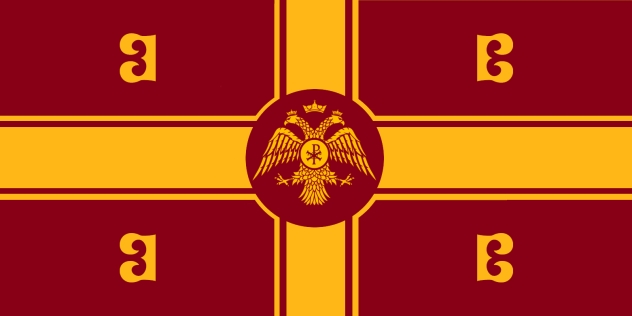
Note: This article’s information comes from various Byzantine historians in their era and has some graphic content, as if Byzantine history is the setting of a Tarantino movie. So prepare yourselves!
Other Byzantine Articles from the Byzantium Blogger:
Byzantine Science and Technology
7 Reasons to be Interested in Byzantium
The Surprising Life of a Medieval Empire
I. Crime and Punishment
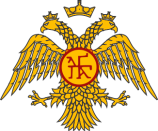
The laws of Byzantium, as mentioned in Justinian’s 6th century code of laws (Corpus Juris Civilis), later repealed and translated from Latin to Greek by Leo VI the Wise in the late 9th century was as simple as “an eye for an eye”. For example, men who castrated other men were to be castrated in return, men who blinded other men were to be blinded in one eye in return, and whoever falsely accuses someone else would be convicted the same way. Sometimes, criminals were subjected to humiliation either by being paraded through town or put in a show. Men who were pilloried had their heads shaven off, stripped off their clothing and dressed in rags if they were rich and in women’s clothes if they were men, according to the Histories of Niketas Choniates. According to the 7th century Sophronios of Jerusalem, sometimes, convicted criminals would be smeared in pitch to let them suffer the horrible smells, draped around with animal intestines, and made to sit facing on a donkey facing backwards having to shout out “I am an idiot!” and people watching the criminals would shout insults at them and their parents and would even throw blood or their faeces at them and sometimes even wood and stones. Worse than that, jesters would mock the convicted criminals by performing an act of the crimes they committed. One story of public humiliation takes place in 765 when Emperor Constantine V punished the monks who opposed his religious policies (possibly Iconoclast policies) by forcing them to walk around the Hippodrome of Constantinople holding women as the crowds jeered at and spat on them.
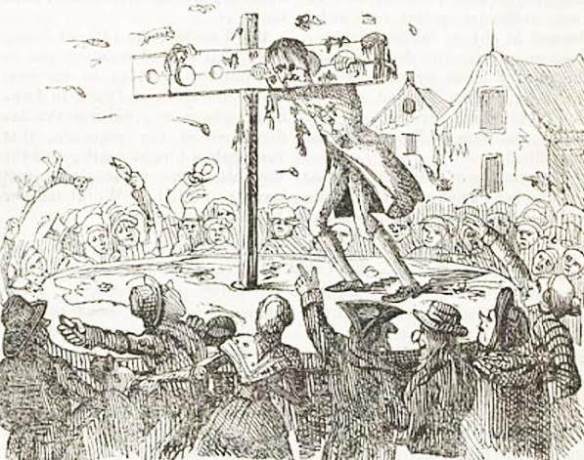
Some punishments for certain crimes in the Byzantine world were very unusual yet were said to be “innovative”. During the reign of the first Byzantine emperor, Constantine I the Great (306-337), he increased the number of capital crimes and punishments for them such as having the hands cut off for corrupt officials as their hands symbolize their greed and if a nurse assists in seducing someone, molted lead should be poured down her mouth and throat. As a warning for others, emperors would place the amputated limbs of criminals on the streets of Constantinople and the Hippodrome; these included the limbs of Emperor Phokas who was deposed by Heraclius in 610 and the limbs of Emperor Leo V who was deposed and mutilated by the conspirators of Michael II in Christmas of 820. One emperor, Andronikos I Komnenos who was deposed in 1185 by Isaac II Angelos was slowly mutilated by the people of Constantinople until he was torn up to many pieces. Another story of an unusual punishment revolves around the Iconoclast emperor Theophilos (829-842) of the 2nd Iconoclast period in Byzantium and the brothers Theodore and Theophanes of Jerusalem who defended the veneration of icons opposing the policies of the emperor. To punish them, the emperor made a bad quality poem and had it tattooed on both of their faces making them known as the “Graptoi brothers” or “The Inscribed Ones”. The poem was later written in the Chronicles of a certain Symeon:
“In that fair town whose sacred streets were trod by the pure feet of the Word of God- the city all men’s hearts desire to see- these evil vessels of perversity and superstition, working foul deeds there, were driven forth to this our city, where, persisting in their wicked and lawless ways, they are condemned, branded on the face as scoundrels, and hounded back to their native place.”
Other than that, Emperor Theophilos after hearing that the icon painter Lazaros Zographos had been painting icons in his prison cell, had hot plates be applied to Lazaros’ hands as his punishment. Lazaros died shortly after and became a saint; this scene where the emperor has the hot plates applied to Lazaros’ hands are depicted in the Madrid Skylitzes. Another unusual punishment depicted in the Madrid Skylitzes is when the admiral Niketas Ooryphas in 873 ordered that the Christian defectors he captured from the Arab fleet he defeated be skinned alive; in order to do this, he had them boiled in pitch to remove them from the baptism they have renounced. According to the 12th century Armenian historian Matthew of Edessa, the abdicated Armenian king Gagik II was offended that Markos, the bishop of Caesarea in Cappadocia named his dog “Armen” thinking it as an insult to his people. When dining with the bishop, the bishop said he named his dog that because the dog was powerful like a soldier (most of them being Armenians), though Gagik did not believe it until it was proved. In order to prove that the dog was powerful, he had the bishop and the dog placed in a bag where the dog was beaten many times causing it to maul the bishop into bits, and as a result the bishop was dead. The story of the bishop Markos being mauled by his dog may possibly be a legend, although another legend about Ignatios, the architect of the Hagia Sophia is as strange as the previous one. Emperor Justinian I feared that Ignatios would be more popular than he was, so when Ignatios was working on Justinian’s equestrian statue above the column next to the massive church he previously built, the scaffolds were removed leaving Ignatios trapped above. However, the architect had a smart plan by cutting his clothes into pieces and tying them together which he sent to his wife below who was told to dip a rope in pitch and swinging it up to let him down. The rope was then burned to show no signs of his escape and Ignatios escaped to live as a monk only to be recognized by Justinian 3 years later who then agreed to spare him for being able to brilliantly escape. On the other hand, in December 1204, after Alexios V Doukas, the last Byzantine emperor before the fall of Constantinople to the 4th Crusade in 1204 was deposed, his Latin captors debated about executing him in front of him. Alexios V had already been blinded by his rivals but to kill him off, the Latin leaders of the crusade including Enrico Dandolo, the Doge of Venice thought that the ex-emperor could not be killed as an ordinary criminal by beheading or hanging, so the best method of execution for him was to see if he could fly and they did this by throwing him off from the Column of Theodosius I in Constantinople resulting with Alexios V being smashed into pieces as he hit the ground.
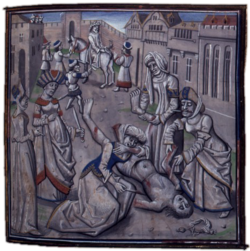
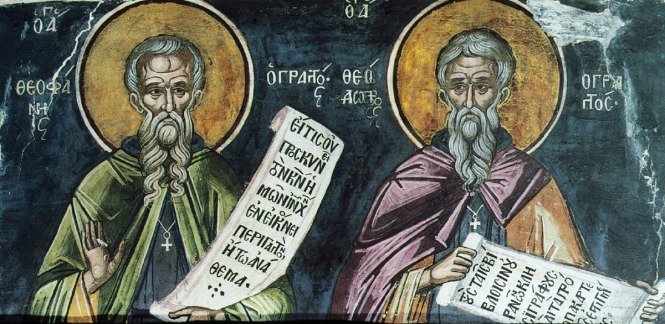
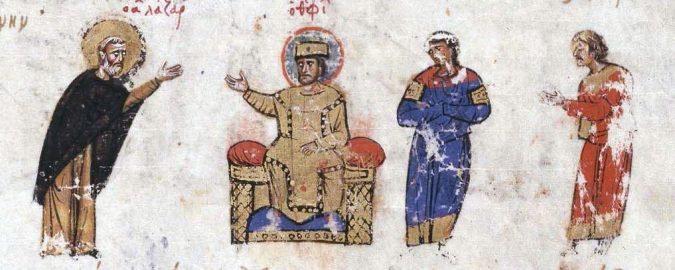
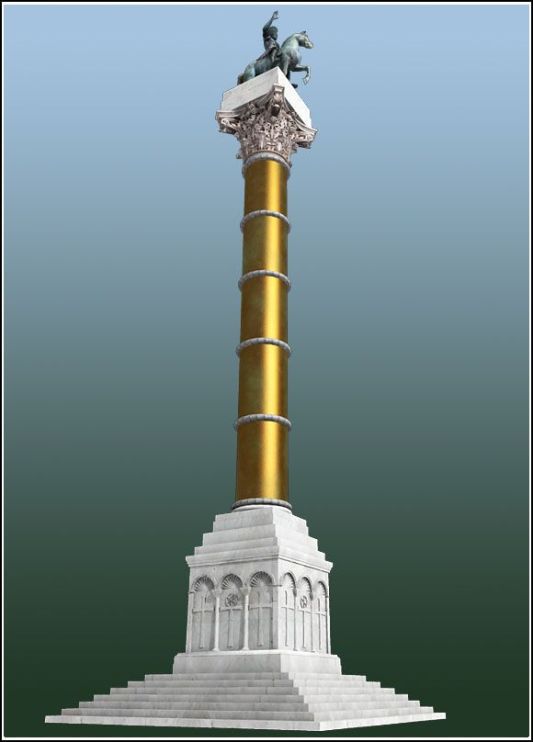
Some bloody stories of Byzantine punishments involve the mutilations of body parts such as noses and eyes; blinding as it turns out was a capital punishment for enemies of the state and mutilating an emperor would disqualify him from regaining the throne as a disabled man was not fit to be emperor. In 695, after Emperor Justinian II was overthrown by the rebellion of Leontios, his nose was ordered to be cut off to disqualify him from retaking the throne. However, 3 years later Leontios was deposed by Tiberius III who also did the same thing to Leontios by having his nose cut off as well as his tongue before sending him to a monastery. Justinian II would retake the throne in 705 ordering the same thing on Tiberius III by having his nose removed and afterwards both the deposed Leontios and Tiberius III were executed. The process of having the nose removed was known as a “rhinotomy” and with Justinian II missing a nose during his 2nd reign being replaced by a golden prosthetic; he gained the nickname “Rhinotmetos” meaning “slit-nosed”. Another person in Byzantine history who had a mutilated nose replaced by a gold prosthetic was the general Tatikios who led the Byzantine army of Emperor Alexios I Komnenos (1081-1118) in the 1st Crusade in Asia Minor. Although earlier on, the short-reigned emperor Heraklonas (641) also had his nose cut off by orders of the supporters of his nephew Constans II who was proclaimed emperor. Blinding however was a more common capital punishment in Byzantium and blinding was done through several methods including gouging out the eyes, or by using tools such as kitchen knives, tent pegs, or candelabrum, but a more merciful way to blind people was by placing red hot cups over the eyes. One emperor who was blinded was Constantine VI (780-797) who first ruled with the regency of his mother Irene of Athens but when he was old enough, he began to quarrel with his mother possibly because he supported Iconcolasm while she did not. Irene ended up overthrowing her son and having him blinded so cruelly that he shortly died from the injuries leaving Irene to be the first woman to rule the Roman Empire (797-802) temporarily restoring the veneration of icons. With the defeat of the Bulgarian army in the Battle of Kleidion Pass in 1014, the Byzantine emperor Basil II becoming known as “the Bulgar Slayer” is said to have blinded 14,000 Bulgarians leaving 1 out of every group of 100 to be blinded in only one eye so that he could lead the rest back home; upon seeing this the Bulgarian tsar Samuil allegedly died of shock causing the fall of the Bulgarian Empire 4 years later as it was incorporated into Byzantium. After being defeated by the Seljuk Turks at the Battle of Manzikert in 1071, Emperor Romanos IV Diogenes fought a civil war with the rival Doukas family from 1071-72 and lost but was promised to not be harmed, although the Doukas family violated their oaths and blinded the emperor. The blinding was done by an inexperienced Jew causing Romanos IV to die from blood loss a few weeks later. Years later in 1094, Nikephoros Diogenes, the son of Romanos IV was also blinded for plotting against the emperor Alexios I Komnenos, but even though blinded, Nikephoros was still able to learn with the help of someone reading the text for him according to the historian Anna Komnene who also said that the blind Nikephoros was interested in geometry. According to a tale by the historian Laonikos Chalkokondyles, when Byzantine Emperor Andronikos IV who deposed his father Emperor John V in 1376 was deposed by his father in 1379 retaking the throne, the latter was forced to blind his son by orders of the Ottoman sultan Murad I; John V then poured hot vinegar over his son’s eyes which did actually better to Andronikos IV making him able to see better later on. Other emperors who were blinded after being deposed included Leontios (695-698), Artavasdos (742-743), John IV Laskaris of Nicaea (1258-1261), as well as Isaac II Angelos (1185-1195) although Isaac II returned to power in 1203 being blind. Meanwhile, there is also evidence of tongues being cut off as seen with the Catholic subjects of North Africa in the 6th century conquered by the Arian Vandals and many of the victims whose tongues were cut off were holy men and despite losing their tongues they were still able to speak and were able to journey to Constantinople to display the miracle, although the historian Procopius of Caesarea adds that these people lost the ability to speak when visiting the city’s prostitutes.
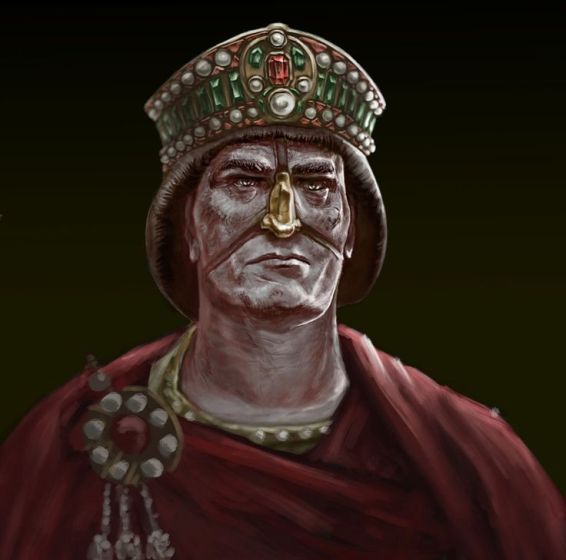
For many who have committed crimes in Byzantium, being imprisoned was a common punishment but for heretics, or those who have created false teachings on religious doctrines which are against the church teachings, their punishment was usually exile or house arrest to avoid spreading their false teachings. Unlike in medieval Western Europe where heretics were often burned at the stake, the Byzantines did not deal with them this way; although once according to the Alexiad by the historian Anna Komnene, her father Emperor Alexios I Komnenos (1081-1118) threatened to burn the Bogomil heretics- who believed in one good and one evil god- at the stake. When the heretics were rounded up in front of 2 pyres- one for Christians and the others for the Bogomils- they had to decide and at the final moment those who have decided that they were Christians were spared and were given gifts by the emperor and those who stayed Bogomils were returned to prison while only their leader named Basil was burned. Now speaking about prisons in Byzantium, they were mostly very dark and prisoners could not tell if it was day or night and had to sleep without any space to move. Prisons were so dark that the 14th century writer Demetrios Kydones wrote that when prisoner were released, they were overjoyed seeing daylight and getting fresh air once again. If prisons turned out to be one of the worst places because of darkness, what more of mines? According to the Church Father and Patriarch of Constantinople St. John Chrysostom, those condemned to work in the mines are only given a lantern to avoid falling into clefts otherwise it is completely dark without the lanterns that they do not know anymore what time of day it is until the guard makes a loud noise to signal that it is time to eat. The prisoners in the mines can only be released after 10 if when they become disabled to work. Aside from mines and prisons, the monastery was another place to send criminals too, though rarely unless they’ve committed crimes with a sexual nature, which according to the laws of Justinian I, the penalty for sex crimes was to be confined in a monastery to improve the criminal’s morality. Otherwise, those who were sent to live their lives in monasteries were deposed emperors namely Michael I (811-13), Romanos I Lekapenos (920-944), the sons of Romanos I, Michael VI (1056-57), Isaac I Komnenos (1057-59), Nikephoros III (1078-1081), John IV Laskaris of Nicaea (1258-1261), Andronikos II Palaiologos (1282-1328), and John VI Kantakouzenos (1347-1354). If being sent to a monastery was the punishment for sex crimes according to Justinian I, the punishment for those who have committed homosexual acts would have their genitals completely amputated and they were paraded through the city. A later source even says that the punishments were more graphic as reeds were inserted through men’s genitals painfully. Among the victims of these punishments were bishops, meanwhile after Justinian I, these punishments were not continued by later emperors.

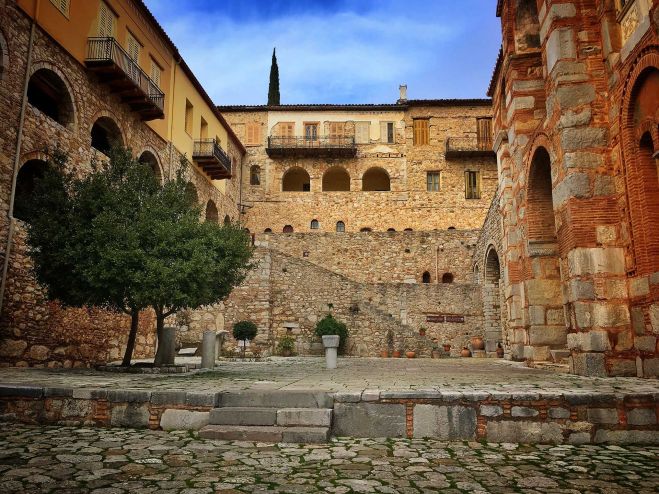
As late as the 15th century, the Byzantines still stuck to their archaic methods of punishments including blinding but still have not developed more advanced means to torture and execute people like guillotines or electric chairs. It was mentioned by the Spanish traveler Pero Tafur (as I have mentioned in the opening quote of this article) in 1437 that one of his men was killed at sea by a Byzantine Greek so he brought the corpse and the Greek killer to the emperor John VIII Palaiologos who did justice to the killer by having his hands cut off and his eyes pulled out and the Byzantines replied that the emperor could not take the killer’s soul. Similar to Tafur, the 15th century Byzantine philosopher George Gemistos Plethon argued against the unusual Byzantine punishments of mutilations and blinding saying it is barbaric and un-Hellenic. For Plethon, punishments were meant to be for men to not commit crimes in the future, but instead of punishments, Plethon thought it would be better to just execute the criminal for maimed people would be a burden to the state. Another thing Plethon suggested to the emperor Manuel II Palaiologos and Theodore Palaiologos, the despot of Morea that condemned criminals are better off to be building the defensive wall to protect the Peloponnese from the invading Ottoman Turks. In the final days of the Byzantine Empire, they may have not been so active in doing brutal unnecessary punishments but their contemporaries such as the Ottoman Turks and the Walachians were just as brutal as them or even worse in delivering punishments. For the Ottomans, their sultan Mehmed II- who is best known for defeating the Byzantine Empire in 1453- often executed hundreds of his captives and sawing them in half slowly across the diaphragm, as said by the Greek historian Laonikos Chalkokondyles. The same historian also writes an account about how the Turks reacted to the impaled corpses of the enemies Prince of Walachia, Vlad III Dracul (1431-1477). 20,000 men, women, and children were seen impaled on spikes as the Turks marched into Walachia (today in Romania) and with the corpses being impaled for a long time, birds have already made nests in their entrails; this method of execution made Vlad III known as “the Impaler”.
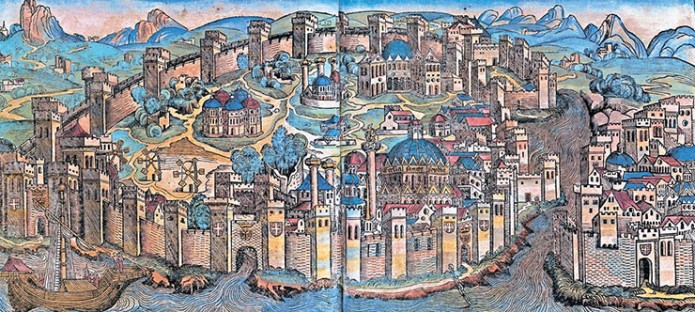
II. Medical Practice

Apparently in Byzantium, people would stand around a doctor as he performs surgery on a patient allowing the people to witness the bloody process that goes on. Doctors too would dissect bodies for research; according to the chronicler Theophanes the Confessor, when the Slavic chief Christianos was captured in 763 after raiding Byzantine territory, his limbs were amputated and afterwards doctors vivisected him from his genitals to his chest for medical purposes. In one story from the 940s, 2 conjoined twins who were born in Armenia came to Constantinople being an unusual sight for people to see until they were thought of as an evil omen. Around the same time Constantine VII Porphyrogennetos returned to the throne in 945, the twins returned and one died so a doctor performed a surgery to cut off the dead twin so the other one could live on; the surgery was a success but 3 days later the surviving twin died. In a more supernatural case, the 6th century writer John Moschos documents that a mime woke up with all 4 limbs cut off after the Mother of God appeared to him in a dream tracing lines across his arms and legs for mocking her on stage, and when waking up he was a stump that could no longer move. Meanwhile, the 7th century doctor Paul of Aegina offers detailed instructions on removing kidney stones which is by using a stone cutter between the patient’s testicles and anus cutting diagonally across. For children however, Paul of Aegina says performing the surgery for kidney stones is much easier because their bodies are much softer compared to the older ones. The same doctor also made an account of how to castrate people in order to make them eunuchs; the first way is by compressing the testicles of a baby when soaking them in hot water until they disappear and the 2nd and more common and painful way is by cutting off the testicles. In one story, the emperor Alexios III Angelos (1195-1203) decided to perform the surgery by himself by burning his legs to stop the swelling but when he could not handle it, he began screaming having the doctors come in to save his life, which they did with drugs. Another story of a surgery takes place in 578 when the abdicated mad emperor Justin II was tormented by bladder stones and as the doctors operated him, the result was a failure and the emperor died 9 days later.
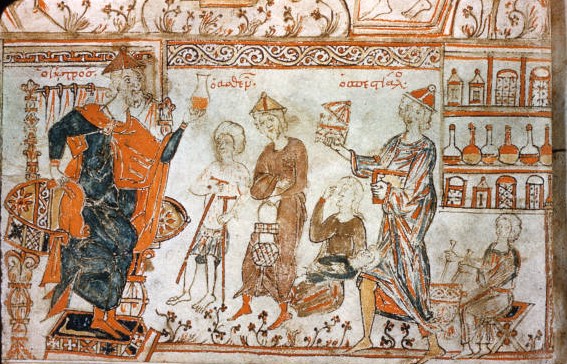
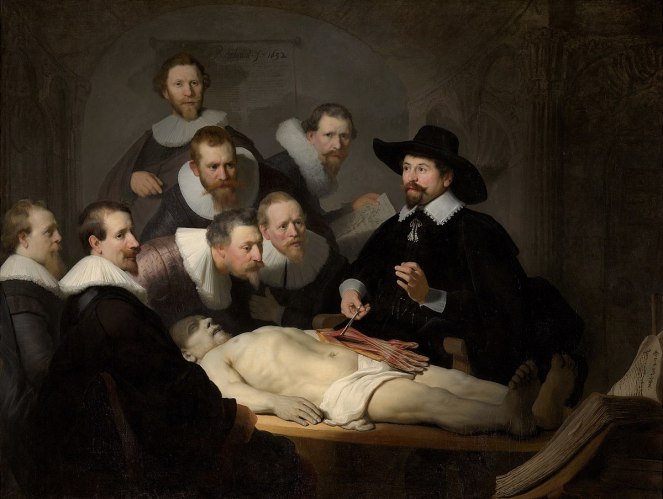
All over the Byzantine Empire, there were numerous hospitals as the Byzantines invested heavily on hospitals and medicines for the well-being of their people. Many of these hospitals were associated with monasteries such as the one in Constantinople founded by Emperor John II Komnenos (1118-1143) and his wife Irene of Hungary which had 50 beds in 5 wards. In hospitals, the Byzantines already had quite advanced surgical equipment such as cauterizing irons, forceps for the teeth and many other types of forceps, a tonsil knife, tooth file, a scalpel for the eyelids, a uterine dilator, rib saw, a clyster for irrigating genital passages, tweezers, needles, and a tool known as a “skull-breaker” possible to break a dead fetus in making its extraction easier. For remedies, the Byzantines had come up with different kinds of mixtures and drugs but sometimes some diseases were only cured by supernatural ways, many of which took place when patients received a miracle after praying to St. Cosmas and St. Damian, the 3rd century early Christian martyr twins and patron saints of medicine. In one story, the relic of the True Cross was paraded around Constantinople during the month of August when everyone is usually ill and the relic was able to cleanse the air improving the health conditions. Meanwhile, the law in Byzantium punished any doctor who caused the death of a patient with exile or death especially if the doctor gave a drug that ended up killing a female patient which was supposed to be a drug for conception. When it came to matters concerning childbirth and things only women can see, the emperor Leo VI the Wise decreed in 900 that female doctors should be the ones to take care of these matters. For the Byzantines, the worst kind of doctors are dentists; as the 12th century writer Theodore Prodromos recalls, it was the worst experience ever saying that dentists being cruel executioners bring siege engines to your mouth and yet you cannot fight back. The worst part for him is that they bring so much pain with their tools and yet they expect to be paid for it, for this Prodromos calls dentists thieves as they take your body parts (teeth) and must be punished by the law. If going to the dentist today for extractions or a root canal is already a torture, what more back then in the time of the Byzantines when the technology wasn’t yet as advanced?
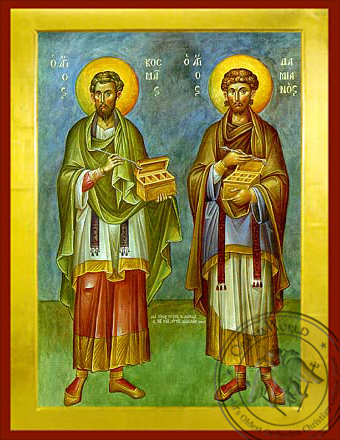
Well, this is about it for this article and hopefully this had a lot of information on the bloody tortures and punishments the Byzantines did throughout their history. The Byzantines were surely innovative in science, medicine, philosophy, and theology but also in methods of torture and punishments for criminals. Coming up with the most brutal forms of punishments and executions such as blinding and dismembering limbs and body parts for me is one of Byzantium’s biggest mysteries. However, since the Byzantines were the descendants of the Romans and Greeks together with many influences from the near east such as Persia and Egypt, many of their brutal methods of tortures and executions found themselves in Byzantium in which the Byzantines adapted. Punishments for criminals were not the only bloody aspects of Byzantine life, medical practice and operations also carried out a lot of blood for people to see. As it turns out, war was not the only bloody part of Byzantine life because even in times of peace, executions were frequent and people enjoyed viewing them. When it comes to the law, the Byzantines were advanced in making them fair and able to serve the people but when the law required the execution of punishments, they were very severe. Surely, this article had also proved things we have not known yet about emperors like Justinian I who was possibly Byzantium’s most influential ruler but at the same time still very brutal and unpractical when it came to punishing criminals especially the types he loathed, including homosexuals showing that the Byzantines were not tolerant to different sexual orientations despite being a cosmopolitan society. Anyway, hopefully this article was in a fun way mentioned a lot of the cruel and unusual things the Byzantines did such as the blinding of the Bulgarian prisoners by Basil II and the cutting off of the noses. I personally find the stories of Byzantine surgeries and mutilations very intriguing and entertaining as they are so unnecessarily bloody, as if they were part of a Tarantino movie. Meanwhile, the unusual punishments for heretics or sex crimes seem like a medieval version of George Orwell’s “1984”, which will be a topic for another time. For my next article, I will go on about the Byzantine’s views on foreign lands and people to be followed with the cultural differences between the Byzantines and Westerners, and then to an article about heresy in Byzantium and how similar the Byzantine world is to George Orwell’s “1984”. On the other hand, sometimes things just happened supernaturally and had to do with divine intervention to heal sicknesses or punish some people. From the founding of the Byzantine Empire in 330 to its end in 1453, there was never really a time when things were not bloody. Well, this is all for now from The Byzantium Blogger, I hope you all enjoyed reading and learned more about the bloody history of Byzantium but hopefully you were also inspired especially for those who plan to be doctors, lawyers, Byzantine scholars like me, or just for those who have nothing to do and found something interesting to read… thanks for viewing!
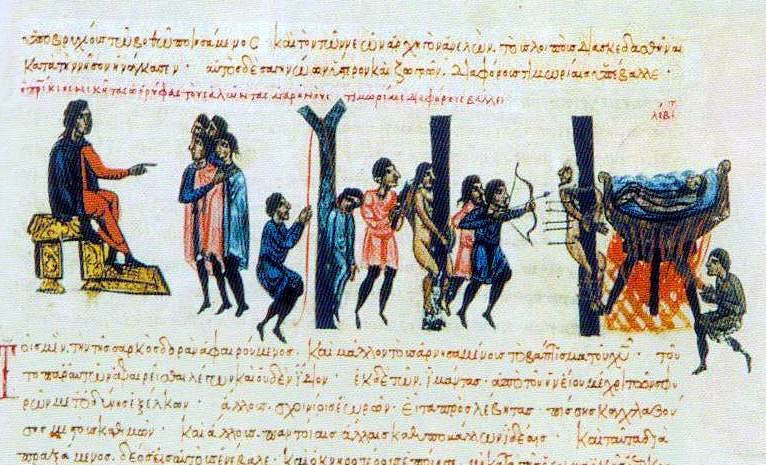






































































One thought on “Byzantine Life- Crime, Punishment, Heresy, and Medical Practice”